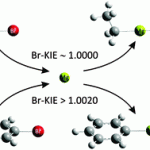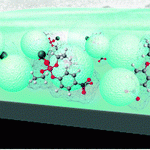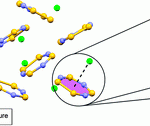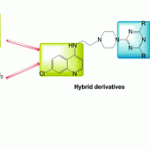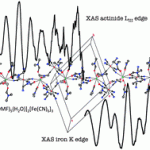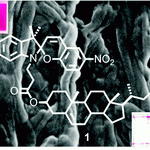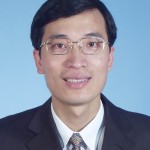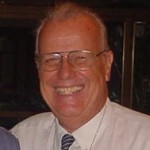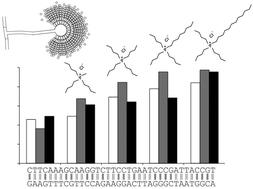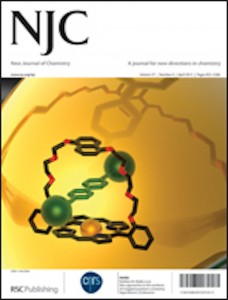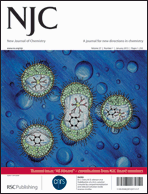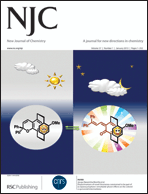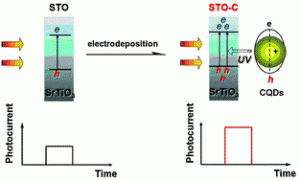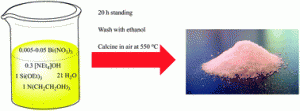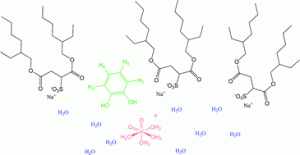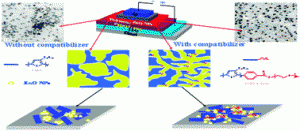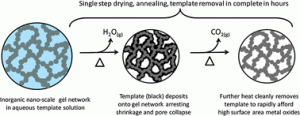Welcome to one of our favorite category of our NJC blog. NJC talks to some of our authors of the February issue of NJC. Scroll down to read interviews with research scientists and discover their development of interest in science, mentors, research work, and other aspects of their careers.

Our first author Dr Jörg Saßmannshausen holds a Computer Officer position at the University College London, London, UK. His current research focuses on Organometallic Chemistry – Reaction Mechanism.
Why you choose this type of position and how you motivate yourself? I always was a Chemist with a spanner in my hand. When I started to move into the area of Molecular Modeling, I also started to set up computer clusters and installed programs. The real beauty of my current position is I can do both: I get paid for using my ‘spanner’, i.e. maintaining the Department’s High Performance Computers and giving advice here, and I still can pursue my research in my spare time. I am fortunate that the Department is really supportive here. So I got an ideal position: a permanent job in a vibrant Department, which allows me to do the research I am, interested it without the administrative burden or writing research grant proposals. My curiosity is probably my greatest motivation here.
What experiences in school science, if any, influenced you to pursue a career in science? I think I was always interested in science, even in primary school. During my time in secondary school I had not only really good science teacher in Biology, Physics and Chemistry, there were also some great programs on TV at the time. So I absorbed as much as I could get. Being a practical person (the ‘spanner’) I decided to do an apprentice ship as a laboratory assistant in Chemistry when I left secondary school. That was the final inspiration, which I needed to become a Research Chemist.
On the main motivation for submitting his work in NJC, Jörg said: “I found that work a wonderful example how wet chemistry, molecular modeling and spectroscopy can work hand in hand to look into reaction mechanism. In order to reach a broad audience we decided to publish it in New Journal of Chemistry… Seeing my publication printed” is the most exciting moment during his research.
A different career or a different profession for Jörg? I actually toyed with the idea of becoming a Gardener. However, when you make your hobby your profession, you are losing your hobby, so I decided against it.
Gardening is Jörg’s favorite after work activity. ”And I used to build my own furniture, a past-time which I will take up more now that I am settled”, he added.
Taming the shrew: [TMEDALi-Zn(C2H4)2L] as a model compound for anionic ethene polymerisation by Jörg Saßmannshausen, Jan Klett, Alan R. Kennedy, John A. Parkinson and David Armstrong, New J. Chem., 2013, 37, 494-501, DOI: 10.1039/C2NJ40874K.
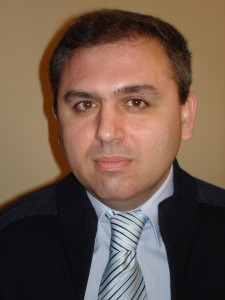
Our next author Dr George Psomas is an Assistant Professor at the Department of General and Inorganic Chemistry at the Faculty of Chemistry, Aristotle University of Thessaloniki. His research interests are in the area of Bioinorganic Chemistry.
On choosing a career in science, George comments: “My teachers in chemistry motivated me highly to science. It combines research and working with young people.” In his paper published in NJC, George Psomoa and his colleagues describe the successful synthesis of Zinc(II) complexes with the quinolone antibacterial drug flumequine. “I was sure that the article was suitable for a reputed journal such as NJC” explaining why choosing the NJC journal.
In his free time George enjoys having fun with his sun. And the most exciting moment during his research is “When unexpected interesting results are obtained”.
Zinc(II) complexes with the quinolone antibacterial drug flumequine: structure, DNA- and albumin-binding by Alketa Tarushi, Jakob Kljun, Iztok Turel, Anastasia A. Pantazaki, George Psomas and Dimitris P. Kessissoglou, New J. Chem., 2013, 37, 342-355, DOI: 10.1039/C2NJ40798A.
Johannes M. Nitsche is a Professor of Chemical Engineering at the
Department of Chemical and Biological Engineering, University at Buffalo, The State University of New York. 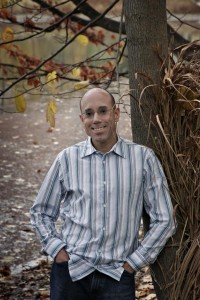 Johannes’s research interests include transport phenomena, transport in biological systems, dermal absorption of drugs and chemicals, biological membrane permeability.
Johannes’s research interests include transport phenomena, transport in biological systems, dermal absorption of drugs and chemicals, biological membrane permeability.
Why you choose this type of position and how you motivate yourself? Because I love science and the theory underlying physical phenomena, and teaching the next generation. Motivation comes from curiosity, and telling yourself to keep going and never give up trying to figure something out. Having colleagues who are really decent and dedicated people makes it easier to work hard.
On choosing NJC to publish this work, he said: “The physical property addressed by the paper (written jointly with Gerald B. Kasting at the University of Cincinnati) is the key to predicting cell membrane permeability, yet measured for very few molecules. We wanted to determine how predictable this property really is from other readily available molecular attributes. We submitted the paper to NJC because it was written as a commentary about another paper addressing this issue in the same journal.”
What is the most exciting moment during your research? “After many late nights, the “aha” moment when you finally understand something.”
Can you imagine having had a different career or a different profession? What would it be? “I always wanted to work at a university for as long as I can remember. In another university life I might have wanted to be a theoretical physicist. In another totally different life I might have wanted to be an artist, but that’s a bit riskier.” Besides his research activity, Johannes enjoys ballroom, latin dancing, and traveling.
A critique of Abraham and Acree’s correlation for deca-1,9-diene/water partition coefficients by Johannes M. Nitsche and Gerald B. Kasting, New J. Chem., 2013, 37, 283-285, DOI: 10.1039/C2NJ40622E
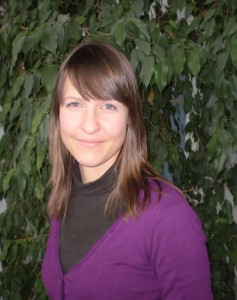
Our last authors are Christina Hettstedt and Konstantin Karaghiosoff from the Department of Chemistry, Ludwig Maximilian University in Munich, Germany.
Christina is a PhD student and together with Prof. Konstatin Kraghiosoff has contributed to the February NJC issue with article that present new chiral heterophospholes. …”Which should be an excellent starting point for the synthesis of chiral phosphines with a broad range of possible applications. For me NJC is the ideal journal to publish my work due to broad readership and great variety of different topics covered by the journal”, she commented on their work.
Her research interests are Phosphorus chemistry, Organophosphorus Compounds, Functionalized Phosphines, Heterophospholes. She likes to investigate compounds at the borderline between inorganic and organic chemistry as well as the combination of practical (laboratory) work and theory.
What is the most exciting moment during her research? “The moment when the molecular structure of a new compound appears on the screen.”
In her spare time Christina likes horse riding, motorcycling and reading.
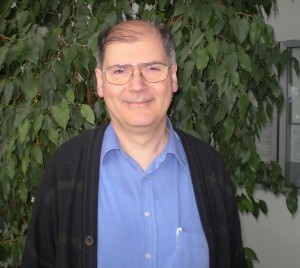
Konstatin Kraghiosoff is Professor of Inorganic chemistry. His research covers broad areas of Phosphorus Chemistry and Multinuclear NMR spectroscopy.
Why you choose this type of position and how you motivate yourself? “To teach students and to explore the mysteries of nature with a young, dynamic and motivated team is the most exciting thing in the world. At school I was fascinated by biochemistry, later on, however, I discovered inorganic chemistry and in particular the element phosphorus…”
Why did you decide to submit this work to NJC? “Our paper on chiral heterophospholes published in NJC is a continuation of our studies on heterophospholes and a continuation of tradition of phosphorus chemistry, which has its roots in Europe. NJC is a journal with an excellent reputation and a very broad readership, thus providing the best platform for making phosphorus chemistry popular.”
What is the most exciting moment during your research? Mounting a crystal after having searched for a long time in the sample for a suitable one.
In his free time Konstantin likes solving crystal structures while enjoying the music of Bruce Springsteen and playing with his cat.
New anellated 4H-1,4,2-diazaphospholes by Wolfgang Betzl, Christina Hettstedt and Konstantin Karaghiosoff, New J. Chem., 2013, 37, 481-487, DOI: 10.1039/C2NJ40709D
We would like to thank to our authors for making time in their busy schedules to answer these questions for us.
Why not submit your high impact research to us today!
